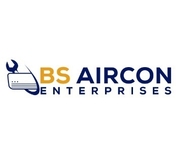In the bustling environment of Navi Mumbai, where temperatures can soar, commercial air conditioning (AC) systems play a vital role in ensuring comfort for both employees and customers. However, the energy consumption of these systems can significantly impact operational costs and the environment. Implementing energy-efficient practices not only reduces expenses but also promotes sustainability. This article will explore energy efficiency in commercial AC systems, offering practical tips for businesses in Navi Mumbai.
Understanding Energy Efficiency
Energy efficiency in AC systems refers to the ability to provide the required cooling with minimal energy consumption. Higher energy efficiency means lower utility bills and reduced environmental impact. When choosing an AC system, it’s essential to consider its energy efficiency ratings. Two key indicators are:
- Seasonal Energy Efficiency Ratio (SEER): This measures the cooling output during a typical cooling season divided by the total electric energy input during the same period. A higher SEER rating indicates greater efficiency.
- Energy Efficiency Ratio (EER): This is calculated similarly but focuses on the cooling output during peak conditions. Like SEER, a higher EER indicates a more efficient unit.
Both metrics help businesses make informed decisions when selecting or upgrading their commercial AC systems.
Tips for Improving Energy Efficiency
1. Regular Maintenance
Regular maintenance is critical for ensuring that AC systems operate efficiently. Schedule annual inspections with a qualified technician to:
- Clean or Replace Filters: Dirty filters restrict airflow, making the system work harder to cool the space. Regularly cleaning or replacing filters can improve efficiency by 5% to 15%.
- Inspect Ductwork: Leaky ducts can waste a significant amount of energy. Inspecting and sealing ducts can improve efficiency and indoor air quality.
- Check Refrigerant Levels: Low refrigerant levels can decrease system efficiency and may indicate leaks. Ensure that levels are maintained for optimal performance.
2. Upgrade to Energy-Efficient Systems
If your business is still using older AC units, it may be time to consider an upgrade. Modern AC systems are designed with improved energy efficiency in mind. Here’s what to look for:
- Inverter Technology: Inverter ACs adjust the compressor speed based on the cooling demand, resulting in reduced energy consumption compared to traditional units that operate at a fixed speed.
- Variable Refrigerant Flow (VRF) Systems: These systems allow multiple indoor units to be connected to a single outdoor unit, optimizing energy use by varying the refrigerant flow according to demand.
- Smart Thermostats: Installing smart thermostats can help businesses monitor and control their energy use more effectively. These devices can be programmed to adjust temperatures based on occupancy, leading to significant energy savings.
3. Optimize Thermostat Settings
The thermostat plays a crucial role in managing energy consumption. Here are some tips for optimizing settings:
- Set Appropriate Temperatures: According to the U.S. Department of Energy, a setting of 78°F (26°C) is ideal for cooling. Each degree lower can increase energy consumption by about 8%.
- Use Programmable Thermostats: These allow businesses to set different temperatures for different times of the day, ensuring that the AC is not running at full capacity when the space is unoccupied.
- Utilize Zoning Systems: Zoning allows businesses to control temperatures in different areas based on occupancy and usage, leading to energy savings.
4. Implement Energy-Efficient Practices
Beyond technical upgrades, businesses can adopt practices that promote energy efficiency:
- Close Blinds and Curtains: During the hottest part of the day, keeping blinds and curtains closed can reduce heat gain, allowing the AC system to work more efficiently.
- Encourage Natural Ventilation: When weather permits, consider opening windows for natural ventilation instead of relying solely on air conditioning. This practice can save energy and improve indoor air quality.
- Educate Employees: Train staff on energy-saving practices, such as turning off lights and equipment when not in use and reporting maintenance issues promptly.
5. Invest in Building Insulation
Proper insulation is essential for maintaining comfortable indoor temperatures and reducing energy consumption. Businesses should:
- Inspect Insulation Levels: Ensure that walls, roofs, and floors are adequately insulated to minimize heat transfer. Insufficient insulation can lead to significant energy losses.
- Consider Energy-Efficient Windows: Installing double-glazed windows can reduce heat gain in summer and heat loss in winter, contributing to overall energy efficiency.
- Seal Air Leaks: Identify and seal gaps around windows, doors, and vents to prevent conditioned air from escaping and unconditioned air from entering.
6. Monitor and Analyze Energy Usage
Tracking energy consumption can help businesses identify patterns and areas for improvement. Consider implementing:
- Energy Management Systems (EMS): These systems provide real-time data on energy use, allowing businesses to monitor performance and make informed decisions to improve efficiency.
- Regular Energy Audits: Conducting energy audits can help identify inefficiencies and areas where energy consumption can be reduced.
7. Collaborate with Professionals
When in doubt, consult with HVAC professionals who specialize in energy efficiency. They can provide valuable insights into the best practices and technologies for your specific needs. Commercial AC Repair Navi Mumbai services can help businesses assess their current systems and recommend upgrades or maintenance practices that enhance energy efficiency.
